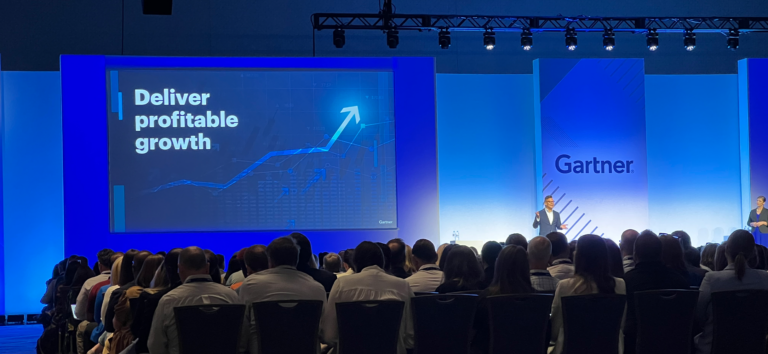How often do you close a website after having a negative experience? And, how often does a positive experience influence your purchase decisions? That’s what customer experience (CX) is all about.
An impeccable customer experience goes beyond one-time purchases. It can help you increase e-commence conversions rates, and turn clients into loyal brand advocates by encouraging them to attract more customers through word of mouth. No wonder it remains one of the top priorities for businesses today.
In this article, we’ll explore how to use big data to transform customer experience strategy into a measurable business practice.
What is Big Data, and How is it Different from Conventional Data?
Big data refers to the massive volumes of information that is collected from various sources and analyzed using advanced technologies. It is so large that legacy systems can’t handle, process, and present all of this data at once.
Traditional data entails structured details with a well-defined schema. Managing, tracking, and processing this data is easier, and you can perform it manually or with basic tools.
Big data unites unstructured, semi-structured, and structured information. And, it should possess specific characteristics, also known as the “5 V’s.”
The Five V’s of Big Data
- Velocity. Velocity means the information should come fast for you to examine rapidly. If you have a lot of data coming in from different sources and systems, you need to be able to look at that information quickly and decide what to do with it. If you can receive, record, and react to insights in real time, the value of your data will increase.
- Volume. This “V” revolves around data size. Imagine you have a box to store pencils. This box can contain only a certain amount of items. So, if you want to add more pencils, you’ll need a bigger container. That’s what volume is about. When we talk about big data, we mean vast amounts of it—so much that data mining would be impossible without special tools. Just like you need a bigger box to accommodate more pencils, companies may need more powerful computers or storage systems if they have a lot of data.
- Value. Value is the usefulness of the data you gather. You should not only collect information, but ensure data-driven decision making based on it. For example, you can collect customer details like age, location, and purchase history to help you determine the most popular goods and services for various age groups and geographical areas. Then, you can offer related products to specific audience segments to increase sales.
- Variety. Data should originate from many sources and be in various formats. It can be structured, taking a streamlined, numerical representation. Or, it can be unstructured – in the form of audio files, videos, and images – which are harder to interpret. It may also come in big bursts instead of a steady stream at different times. For instance, you may have dozens of orders a day and collect more information about customers then, compared to slower periods.
- Veracity. Veracity is all about how much you can trust available data. Inaccurate data can lead to the wrong decisions. For example, suppose you want to launch a new product and look at sales data from similar products in the past. If those statistics are incorrect, you will make a poor choice and end up losing money. That’s why big data should be reliable and provide valuable insights.
5 Ways Big Data Contributes to a Better Customer Experience
1. Providing Insightful Customer Data Analytics about Consumer Behavior
The first way to employ big data to improve customer experience is to interpret shoppers’ behavior. By observing behavior patterns or doing sentiment analysis, you can find out why buyers act in a certain way without asking them explicitly.
Information about client activity and real-time data analysis will let you:
- Personalize interactions;
- Optimize you website, and
- Boost customer service performance.
If you find out the reasons for a high bounce rate, or other customer experience issues, you can address the issue and show others your desire to improve.
2. Attracting the Right Audience with Precise Targeting
One of the crucial things for converting customers is reaching the right target audience. If you communicate with everyone, you risk wasting your efforts on people who may not be interested in your offers. To avoid this, you need customer segmentation.
When integrated into a customer data platform, big data can enrich unified customer profiles to identify your ideal buyers. Do people convert and click on your ads? You can look at the customer engagement statistics to understand whether you have reached the right people. The more data you have, the more detailed a customer profile you can create. Then, you can attract the right audience with comparable characteristics.
3. Creating Tailor-Made Experiences
Personalization is among one of the most common implementations of big data. If you know your prospects well, you can show relevant offers and increase the chances of conversion.
Every customer interaction is a data source. Online merchants can analyze consumer buying patterns to provide contextual next-best product suggestions or recommendations. Or, healthcare applications can track activities like exercise routines to give motivation and wellness advice. All of this leads to building long-lasting relationships.
Netflix is another example. Big data is mainly responsible for the success of the largest online streaming destination. It gathers information such as:
- The duration of a subscribers’ viewing sessions;
- Whether they finished the show quickly or not;
- If they paused the show;
- Whether they then resumed watching it.
Netflix intends to employ artificial intelligence and machine learning to create customized trailers based on users’ likes and dislikes. For instance, if a certain user enjoys romance films, they are more likely to see a non-romance movie if the teaser contains romantic parts.
4. Streamlining Processes
Brands should make every effort to simplify procedures whenever possible. Suppose you often reroute people who call customer service. You may reduce the resolution time if you better match them with the appropriate specialist. Or, you may offer them callback alternatives to prevent long hold times.
Cancellations and delays can be a heavy burden for airlines, for example. Companies need a solution to avoid unexpected disruptions and costs on maintenance or compensation for passengers. That’s where big data comes in. Systems can access current and past data to identify problems pointing to potential malfunctions, so employees can proactively eliminate them. That’s what Delta Airlines did by partnering with Airbus.
5. Forecasting Future Trends and Behaviors
Another advantage of big data is the ability to monitor customer behavioral patterns over time. If you know how clients behave in particular situations, you can forecast demand for products or services. As a result, you can prevent stock-outs and prepare your website for a potential influx of visitors.
Here’s what you can achieve with predictive analytics:
- Better advertising
- Boosting social media engagement
- Coming up with new products based on customer demand
- Optimizing inventory
Improving Customer Experience with Big Data
The amount of data available to today’s brands is impressive. With technologies like a customer data platform, you can gather data across touch points, including purchase history, social media, and the contact center. Whatever your use case is, you can benefit from collecting and utilizing more precise data.
What will you do with it?


